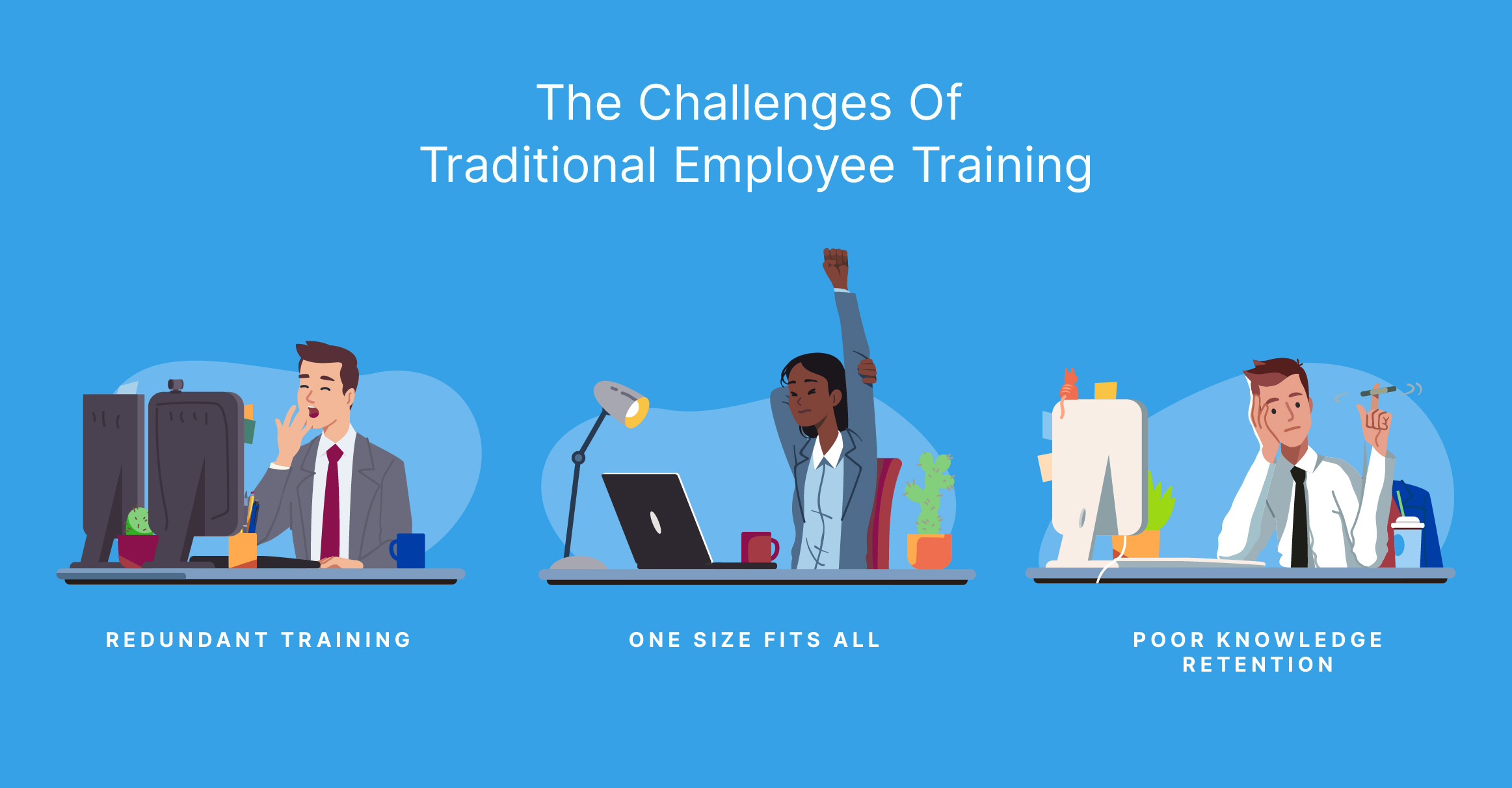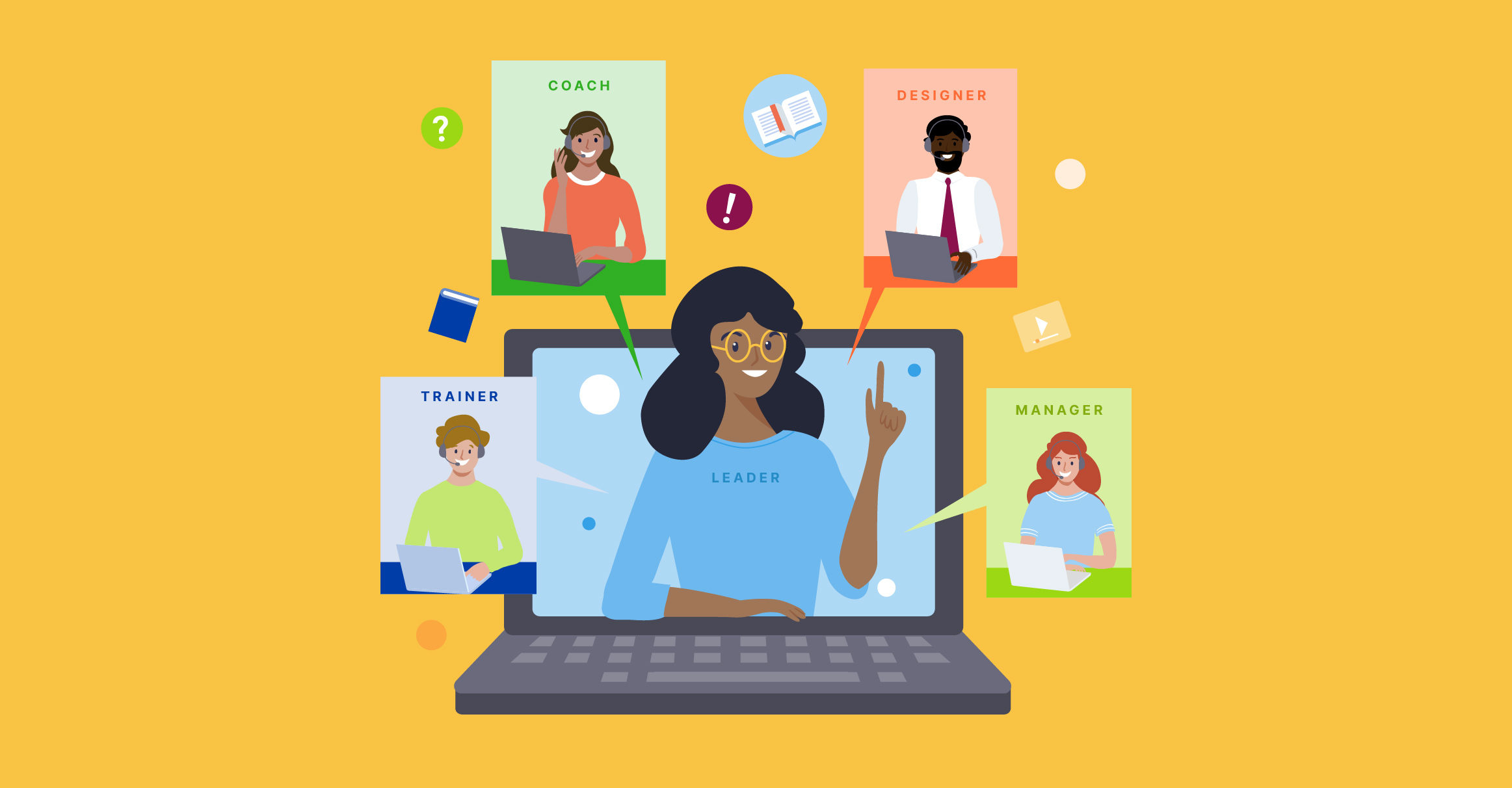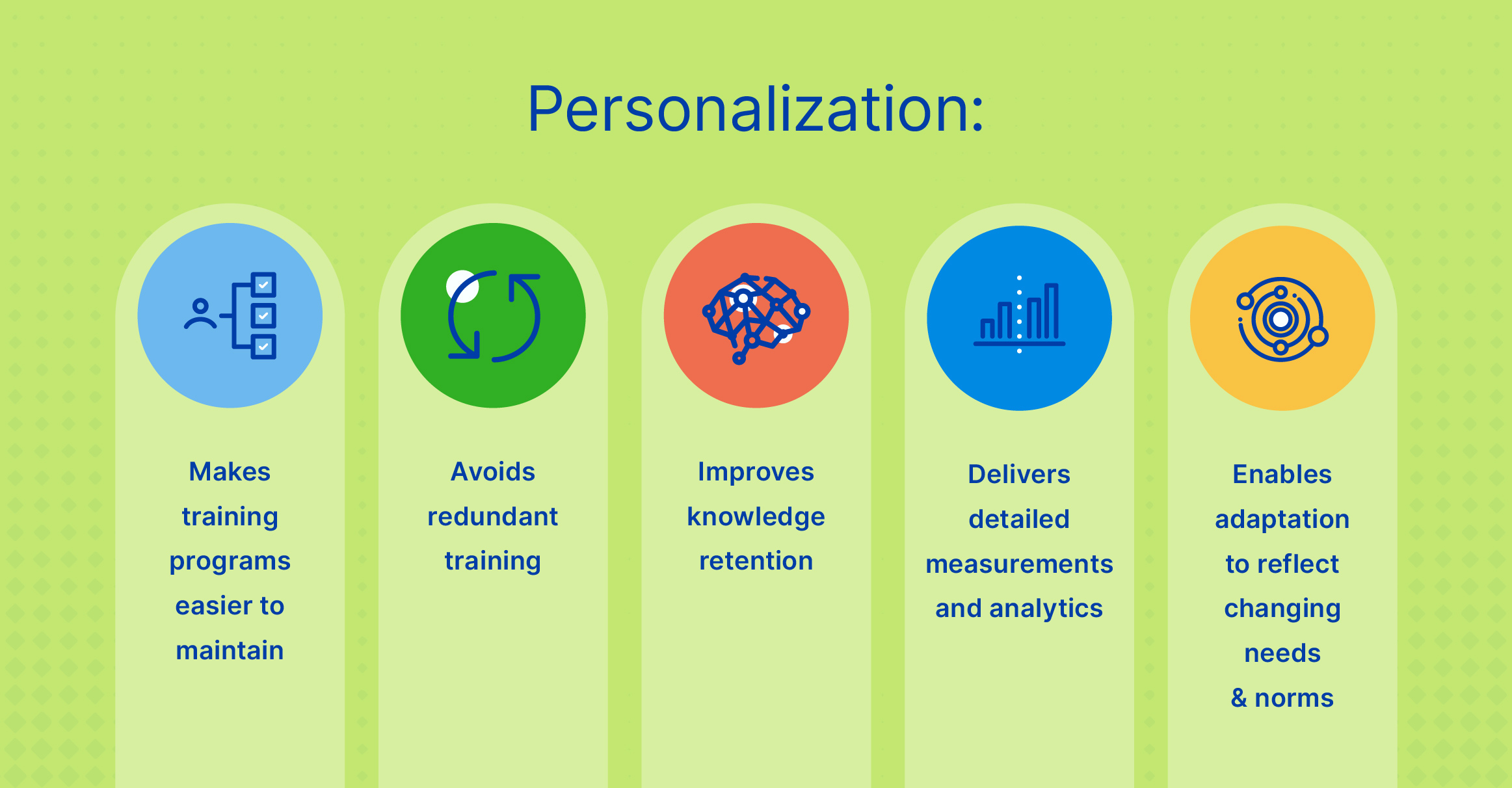In many corporate learning environments, the goal of learning is just the learning itself. L&D teams measure success based on metrics that are typically disconnected from a learner’s competence. They focus more on the volume of content created and more completion-based metrics. Things like how many new courses they create, how many learners complete each course, and whether or not they “liked” those programs.
Traditional methods like these fail to measure whether or not the training is effectively driving improved performance and outcomes for the business. Instead, they focus on the throughput volume of the learning function itself. This creates several challenges for positive learning outcomes:
-
Defaulting to one-size-fits-all
-
Difficulty with managing and maintenance
-
Redundant training
-
Poor knowledge transfer
-
Inaccurate measurements
-
Difficulty with upskilling and reskilling
A personalized learning approach, on the other hand, can transform one-size-fits-all courses using adaptive online training methods that leverage data-driven insights to automate efficiencies, eliminate redundancies, and empower all learning stakeholders to make decisions that yield measurably improved performance. A personalized approach solves the inherent problems with traditional training and evolves a company’s training program into a strategic asset and learning environment.
Challenges of Traditional Learning Methods

Traditional training programs almost always follow a one-size-fits-all pattern. Instead of teaching exactly what each employee needs, they teach the same course to everybody, whether or not all of the material is appropriate. Some learners may find the material redundant, while others lack enough prior knowledge to succeed.
One-size-fits-all... fits none
Training delivery usually defaults to being the same for everyone because adapting or personalizing training to more than a few seems too time-consuming to tackle. Making the best effort to create training that appeals to the masses doesn't yield the best results because learning is extremely personal. What resonates with one person is often very different to what resonates with someone else. Training and learning become truly value-driven when they are personalized to the individual.
Difficult to Manage
Traditional approaches bury knowledge and content together in the form of monolithic course materials. These courses are difficult to manage and maintain. They are usually built from the ground up once, by a team of content developers and planners. But afterward, their monolithic structure makes it difficult to add new concepts or information in a cohesive way.
Redundant Training
Traditional training programs often lead to redundant training. When everyone has to learn the same thing, the only solution is to teach the greatest common denominator. This means that almost everyone has to waste time learning some material they have already covered, instead of focusing on the core tasks of their job.
Poor Knowledge Retention
Traditional training programs often yield poor knowledge retention. Exact numbers may differ but Ebbinghaus' Forgetting Curve shows that 70% of what is learned is lost in 24 hours if it is not used or refreshed. With employee training, this can have serious consequences. The problem is that traditional training is one-time and monolithic, meaning learners don’t get a chance to practice or reinforce material to improve where they had difficulty and retain what they learned all together.
Difficult to Measure the Effectiveness
It is difficult to measure the effectiveness of a traditional training program. Often, organizations simply ask their employees if they liked the training but gain little insight as to exactly what course materials have an impact if any. Without analytics tied to assessments and performance at the learner level, L&D teams cannot truly measure outcomes.
Upskilling and Reskilling Require Adaptation
Finally, upskilling and reskilling require adaptation. In our modern, rapidly changing world, employees need to be constantly trained in new skills and knowledge. And today's worker does not have time to spend on long form, redundant courses. They need training that can fit into the time available so it is bite-sized and focused on their unique needs. This, by definition, cannot be done by inflexible, traditional training programs.
Solving for these challenges may seem daunting. But in reality, personalized learning powered by an adaptive intelligent learning system can overcome these hurdles. Effective learning in today's corporate world is not a single-player sport. From creating the right learning journey to supporting learners during the process, much more than just the learner is involved. Overcoming these hurdles requires the right system to support the learner, those supporting the learner in real-time, and the entire L&D team be more efficient and effective.
Personalized Learning Touches Every Learning Stakeholder
The value of fully Personalized Learning lies not just in the way it can personalize an individual learner’s journey. It should also personalize the experience of every stakeholder involved with the learning process.

Personalized learning and employee training may involve several different types of roles, such as:
-
Content Designer/Author
-
Administrator
-
Trainer
-
Instructor
-
Coach
-
Leader
-
Performance Manager
All roles in the L&D team and all learning stakeholders that need employees to be job-ready benefit from personalization by leveraging the inputs an adaptive system provides to prioritize programs and topics. Learning leaders can see what works and where learners struggle to reach new skills. Instructors and coaches receive valuable input to know where to focus their efforts as the system gathers and presents profiles of each learner’s performance. Managers and business leaders can provide direct support to their staff as they learn and can make better decisions related to skill gaps and risk management related to employee training. There are unique benefits for Trainers, Learning Designers, and Business Leaders alike.
Trainer
The Trainer, armed with personalized insights and data-driven insights for improvement accessible with minimal effort, can give targeted feedback on a one-to-one and cohort-level basis. They can make use of information about each learner as well as the team as a whole in real-time, something not possible without adaptive technology.
Learning Designer
The Learning Designer needs to understand the knowledge needed to succeed in each role being trained. They map knowledge models and journeys, focus on what should be personalized, and use tools to transform content to adaptive, personalized ends. Personalized Learning helps their job by delivering critical insights on what content is actually being effective.
Leader
The Leader links business performance to training. It is their goal to position Personalized Learning as a strategic asset for the company. They need to understand the status of skill-building for their division, so they can make both real-time and long-term decisions to guide learning. Being ready every day may require adjustments to skill-building as business needs are constantly changing.
How Personalization Solves The Challenges Of Traditional Training
Personalization enables the entire L&D team to make strategic, insight-guided decisions about the interactive training process at a granular level. This lets them solve the challenges of traditional training by creating a more powerful learning experience.

The knowledge architecture that underlies learning built on an adaptive learning system is the key to empowering the personalization engine. But this architecture also makes an adaptive online program easier to maintain. Learning journeys replace courses and each step is structured at a bite-sized or granular level, instead of being monolithic blocks of content. Learning designers can easily insert, adjust, and affix new content to adapt to changing information or regulations.
A personalized training method avoids redundant experiences and engages the learner by making each learner’s journey unique to their own needs. In the process, cutting out the fat of traditional training methods saves countless work hours for learners in the process.
Personalization improves knowledge retention. Detailed analytics can track exactly where each learner struggles, allowing for targeted review and practice to improve retention. Visualizing weak spots in the learning journey map instills self-discipline to practice more where it is needed. Trainers can make use of whole-group insights to guide entire teams where they need more practice.
Personalization delivers detailed measurements and analytics. Instead of accruing meaningless “smile sheet” information, the L&D team can track how the learning they provide is really impacting job readiness, analyze data down to the question level, and know precisely where they need to change.
Finally, personalization enables adaptation. It allows for training programs that are constantly changing to reflect the changing needs and norms of the business. The automation and intelligence that underlies an adaptive system allows L&D to be more agile than ever, delivering changes to exactly who needs them and making sure they are learned in just a few clicks.
Personalization as a Strategy to Drive Performance
Seen clearly, personalization is not simply a technique for learning. It is a strategy that companies can leverage to drive improved performance. The goal of personalization is not simply to make employees learn more but to empower the entire L&D team and all learning stakeholders to make outcome-driven decisions.
For more information on this topic, check out our free eBook, Personalization for Performance. There, you will find more extensive information covering exactly how Personalization can impact your business on a holistic level. The eBook also addresses common concerns that companies have, such as having the right technology to develop and deliver personalized learning at scale.